The first Charger Daytona to hit 200 mph was stolen, recovered, and lost again

Hitting 200 miles per hour in a car is not easy. Land-speed racers pick wide-open lake beds for their speed trials to get the long, smooth straightaways needed to reach such velocities, but in 1970, Buddy Baker eclipsed that landmark speed on a closed course, making him the first to do so. His record speed came at NASCAR’s Alabama International Motor Speedway, now known as Talladega Superspeedway, while behind the wheel of Dodge’s aerodynamic masterpiece: the 1969 Charger Daytona. That very record-setting car, DC-93, will cross Mecum’s auction block this May.

The car that Baker drove to 200.447 mph on March 24, 1970, had a storied past leading up to that momentous milestone. The car began life as a Charger 500 and was part of Dodge’s press fleet. It was subsequently stolen, recovered, and turned into a NASCAR racer in time to run the 1969 Daytona 500, with Paul Goldsmith at the helm.
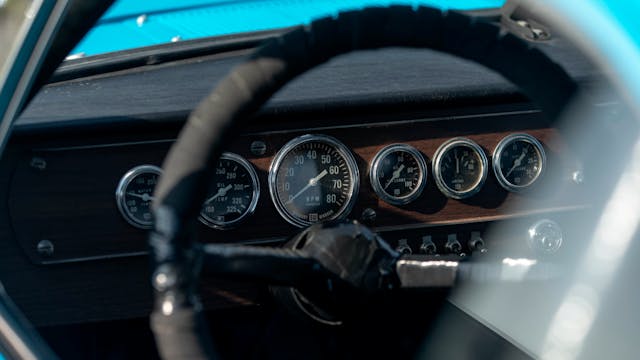
The Charger 500 was Dodge’s first step in improving the Charger’s aerodynamics. The inset grille was replaced by a more flush-mounted version, and the back glass was moved; rather than tunneled between the C-pillars, it sat flush with the car’s profile. The improvements helped, but Chrysler Corporation’s engineers knew that they could accomplish much more. In a fit of experimenting brilliance and styling madness, engineers grafted a pointed, sloping nose onto the Charger 500 and mounted a sky-high wing on the vehicle’s rear.
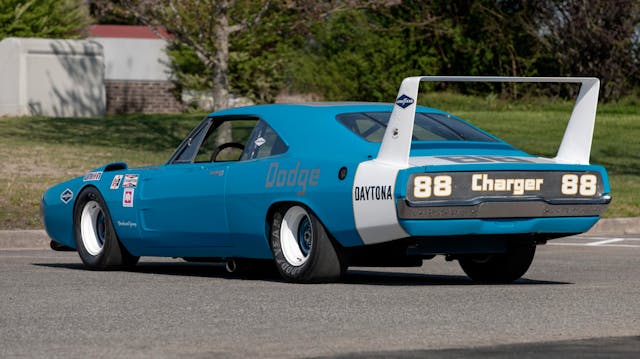
Contemporary legend has it that the trunk—more specifically, the lid—dictated the height of the wing; for Dodge to market these as “stock cars,” their trunks had to open in the traditional fashion. The trunk had nothing to do with it. Instead, the tall wing put the horizontal portion into “clean air” undisturbed by the roof of the car, and the tall vertical fins provided increased stability. The result was a car that sliced through the air rather than bulldozing through it. Just as important, the aero tweaks got rid of lift, which made the cars unstable and erratic at speed.
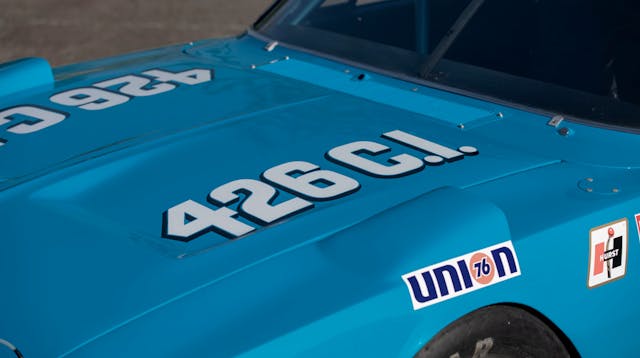
The former #99 car raced by Paul Goldsmith is one of the early experimental cars that first received the aerodynamic nose and tall wing. Known by its serial number, DC-93, the car ran with its new slippery shape at the first-ever Talladega 500 in 1969, with Charlie Glotzbach at the helm, and took the pole position with a blistering speed of 199.446 mph. That is, until Glotzbach—along with a number of drivers including Richard Petty, Bobby Allison, Cale Yarborough, Wendell Scott, and Buddy Baker, all members of the Professional Driver Association—sat out the race in protest of the frequent tire failures.
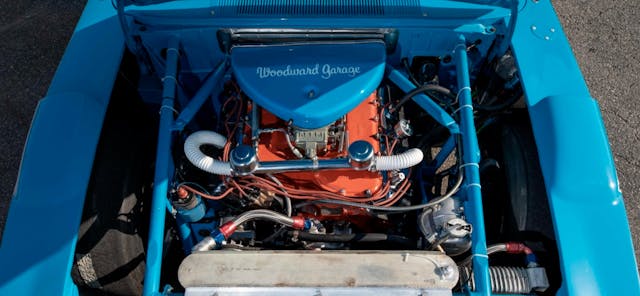
Glotzbach’s 199-mph qualifying run, itself a record, showed the car was capable of eclipsing the 200-mph threshold. Buddy Baker would complete the task, securing the Dodge Charger Daytona’s place in the record books and proving that Chrysler’s hard-working engineers knew what they were doing when they created the bizarre-looking racers.
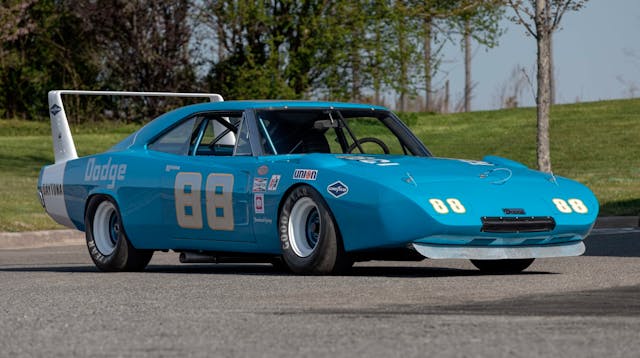
Besides Glotzbach and Baker, DC-93 was driven by racing greats Bobby Allison and Dan Gurney and would go on to USAC Stock Car wins before it traded hands and was lost. It resurfaced and was authenticated as the real 200-mph racer in 2001. Since then it has been meticulously restored by NASCAR veteran Ray Evernham and wears period-correct paint and wheels. Naturally, it has a race-spec 426 Hemi under the hood, just as it did when it was waging war against Ford on the superspeedways.
Mecum has the car scheduled to hit the auction block on Friday, May 21, as part of its Indy 2021 sale. The car’s significant history and Hall of Fame drivers make this racing legend a hot commodity. We’ll have to wait until next month to see whether the record-setter excited buyers like it did the NASCAR crowds.

